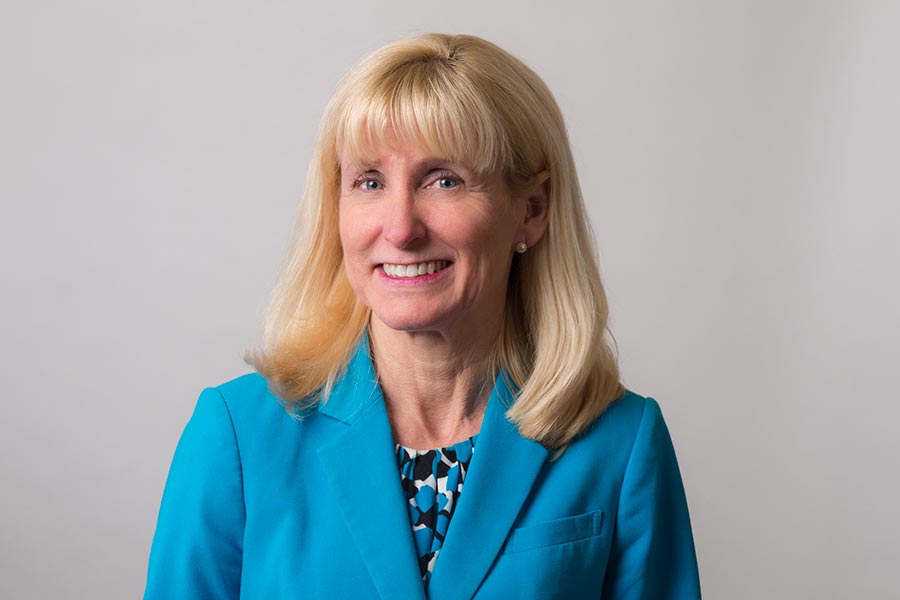
Stephanie Couch, Ph.D. ‘12, has led the Lemelson-MIT Program as Executive Director since 2016 and has more than a decade of experience in STEM education policy, research, development and strategic fundraising.
Stephanie has won numerous awards for her leadership role in advancing STEM education in California and in 2015 she received the Biotechnology Educator of the Year Award from California Life Sciences Association. Stephanie was selected as one of San Francisco Business Times’ Most Influential Women in Bay Area Business in 2016 and inducted into Alameda County Women’s Hall of Fame in the education category. She received a master’s degree and a doctorate from the Gervitz Graduate School of Education at UC Santa Barbara, and a bachelor’s degree from the University of California, Davis.
What drew you to choose UCSB for your graduate studies?
In 1998 I was working with the UC Office of the President to bring internet connectivity and new models of teaching with technology to K12 schools. My role included securing state funding for the Digital California Project (now the K12 High Speed Network). Policy makers wanted proof that the broadband networks and online education programs would improve student outcomes. Researchers in the Gevirtz Graduate School made visible the importance of face-to-face conversations in real time across distances. The bandwidth allowed students to learn through live engagements with others beyond the classroom walls – something taken for granted in today’s world. The researchers, including emeriti professor Judith Green, introduced me to interactional ethnography as a way of documenting and understanding students’ and teachers’ technology experiences.
What was the most important thing you learned at UCSB?
My studies focused on the complex interactions between language, culture and technology. I learned how to generate new understandings by studying human interactions, drawing on the principles and practices of ethnography in education. I will never forget staring out at the ocean after finishing my dissertation defense and realizing that my ways of thinking and ways of interpreting social engagements had been transformed. I had developed ethnographic eyes and ways of reading the world, and there was no going back. More details about my experiences in becoming an ethnographer in education and those of two of my colleagues from UCSB are described in a newly released book by Routledge entitled, Becoming an Educational Ethnographer: The Challenges and Opportunities of Undertaking Research.
How would you describe your role as Executive Director of the Lemelson-MIT Program?
The Lemelson-MIT Program’s initiatives support young inventors and invention educators (preschool through community college). We also administer a national collegiate prize program that recognizes students for their inventiveness. As Executive Director, I have led strategic planning and ethnographic research studies to inform our efforts. I engage in program design, grant writing, fundraising, and advocacy. I co-chair The Lemelson Foundation’s Invention Education Research group, and serve on various boards and committees that are part of a national invention education movement. My colleagues and I are addressing diversity and inclusion by embedding opportunities for young people to learn ways of finding and solving problems common to inventors as part of public schooling.
What do we need to do better as a nation to spur successful inventions among our collegiate population?
Many patentable inventions emerge from work in university labs by faculty and their graduate students. Increased investment in basic research, therefore, can generate more opportunities for collegiate inventors attending research-intensive universities like UCSB. The private sector has a role to play in providing opportunities. Nearly 85% of USPTO patents issued in 2018 to U.S. assignees were assigned to businesses. Corporations that want to make a difference in students’ lives could partner with universities to help students learn how corporate teams work to create new solutions. Demystifying the processes and approaches corporations employ to support problem finding and problem solving is a great first step to getting more students on the pathway to invention. My recent work with Biogen has demonstrated the powerful student outcomes that can be derived when the private sector and educators work together.
There is growing recognition of the lack of diversity among those who earn patents in the U.S. and awareness of the importance of teaching young people to invent. The lack of diversity is an indicator that America is not taking full advantage of the diverse knowledge and insights that fuel innovation. The share of patents awarded to women as first inventor, for example, was 12% in 2016 (USPTO, 2019a). The percentage of patents awarded to people from underrepresented backgrounds are roughly half that amount. Universities have a role to play in changing these statistics. They need to redouble efforts to achieve diversity in fields prone to patenting, particularly in the field of engineering. Universities can also create programs that bring people together from different disciplines to work together in diverse teams to find and develop solutions to problems that matter. MIT Professor Angela Belcher, a UCSB alum and one of the winners of the $500k Lemelson-MIT Prize, has cited UCSB’s College of Creative Studies as a key contributor along her pathway to invention. I’m sure there are many other UCSB students who could become prolific inventors if there was a greater focus on interdisciplinary efforts to nurture underrepresented students’ inventive and entrepreneurial capabilities.
Why do you give back to UCSB?
UCSB made a tremendous difference in my life and in my ability to know how to help others. I am eternally grateful to all who supported my growth and development. I seek to honor my mentors by supporting the next generation and sharing the gift of a graduate education experience.
Watch part of Stephanie's 2018 Graduate Commencement Speech at UCSB